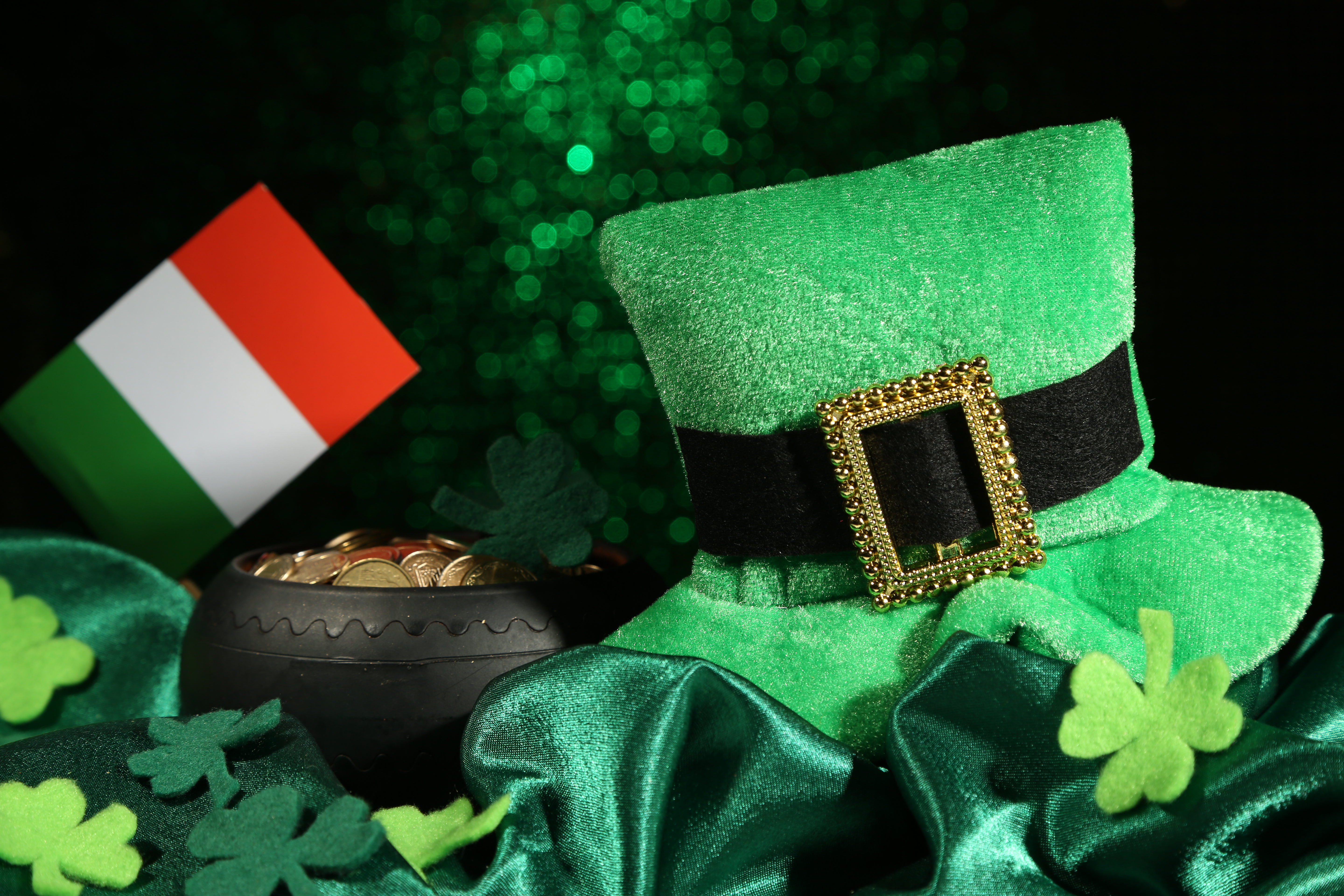Fascinating Facts About St. Patrick’s Day
On St. Patrick’s Day most Americans claim to be Irish for a 24-hour period. It’s not a bank holiday, but it’s a holiday people take very seriously. It has a long history, but all the traditions and customs have changed over time – some of which are unexpected. Here are a few fascinating facts about St. Patrick’s Day you might not know.
Fact #1: There’s More Than One Reason Behind Wearing Green On St. Patrick’s Day
Just about everyone knows you have to wear green on St. Patrick’s Day or you’ll get pinched. There are many explanations on how this came about. One theory is that it’s worn by fairies and immortals and also by farmers to help their crops grow.
Another reason is that the Irish tricksters, leprechauns, can’t see you if you’re wearing green. If you’re not wearing green they can see you and they’ll pinch you. A more plausible explanation is that St. Patrick used the three leaves on a shamrock to explain the Holy Trinity so people started wearing green shamrocks.
However wearing green started, it evolved into a symbol of pride and nationalism and it’s why we wear green to honor the Irish now.
Fact #2: Leprechauns Are Protected By Law

Here’s a little known fact about the leprechauns: they’re protected by European law to prevent extinction. The leprechaun is on a list of items in an area near Carlingford, Ireland designated to preserve the community’s heritage, culture and folklore. It is on a site where a leprechaun was allegedly spotted in 1989.
Fact #3: They Don’t Eat Corned Beef In Ireland
For St. Patrick’s, corned beef and cabbage grace the plates of revelers, but you won’t find it in Ireland. It’s actually an Irish-American dish derived from an Irish tradition. In Ireland, they eat bacon and cabbage.
Their bacon is a bit different from what we are familiar with. It’s “back bacon” which is a traditional British cut. It’s boiled along with cabbage and other root vegetables. Pigs and cabbage were easy to procure in Ireland, but cows were not. When Irish immigrants started to settle in America, beef was what was available.
There are a couple of explanations for how corned beef replaced bacon: some say in the early 20th century Irish laborers were lured to bars that offered a free meal of corned beef and cabbage. Others say early Irish immigrants were drawn to their Jewish comrades’ corned beef because it was comparable to the back bacon they were accustomed to.
Fact #4: St. Patrick’s Day Is A Religious Holiday In Ireland
Cities all over the country hold parades every St. Patrick’s Day to honor the Irish. However, the St. Patrick’s Day parade did not start as an Irish tradition. It’s a religious holiday, and in Ireland the day was typically spent at church and with the family. However, today Ireland uses the holiday to promote tourism.
The first record of St. Patrick’s Day parade was in 1762 when a group of Irish men marched to a tavern in lower Manhattan in New York City. Today it’s the biggest St. Patrick’s Day parade; it attracts more than two million spectators every year.
Fact #5: Pubs In Ireland Used To Be Closed On St. Patrick’s Day

St. Patrick’s Day falls during Lent, the six week period before Easter in which people of Christian denominations give up indulgences. St. Patrick’s Day in Ireland is used as a break from the fast in which people can partake in excesses like drinking alcohol or eating chocolate; however, until the 1970’s, pubs in Ireland were closed for the holiday.
So, though it’s a big drinking holiday in the United States, beer was not originally quite as important for St. Patrick’s Day revelry in Ireland.
The Lakeside Collection St. Patrick’s Day Decor & More
Now that you know even more about St. Patrick’s Day, it’s time to celebrate! Get festive with our collection of St. Patrick’s Day throw blankets, wall art, and much more!
Set of 4 Personalized Irish Pub Coasters

Personalized Shamrock Teddy Bear

Three Irish Blessings Personalized Wall Art

Year to Remember Personalized Irish Pub Sign

Personalized Irish Unicorn Sherpa Throw









